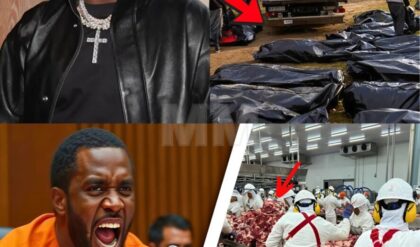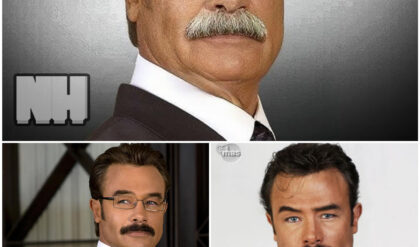Three-on-Three Basketball in the Olympics: Why Isn’t Team USA Dominating?
The Olympics have always been a global stage showcasing the finest athletes across a wide variety of sports. Over time, new events have emerged that push the boundaries of traditional Olympic competition. Breakdancing is now an Olympic sport, and even events like “horse dancing” (equestrian dressage) continue to capture attention. But perhaps the most head-scratching addition for basketball fans is the inclusion of three-on-three basketball.
While three-on-three basketball is a thrilling, fast-paced version of the traditional game, its inclusion in the Olympics has left many fans baffled. Why is the United States, a nation historically dominant in basketball, performing so poorly in this event? The U.S. finished near the bottom in the most recent Olympic three-on-three tournament, narrowly avoiding last place behind China. What’s going on?
The Curious Case of Team USA’s Roster
You’d think with the vast talent pool available in the U.S., they could field an elite three-on-three team every four years. Yet, the roster for the recent tournament tells a different story. The team featured players who, while skilled, were not household names. The youngest player on the team was Canyon Barry, son of Hall of Famer Rick Barry, known for his unique “granny shot” free throw style. Then there’s Dylan Travis, who has played in Europe, and Kareem Maddox, who was not even an active player but a podcaster before joining the team. Rounding out the squad was Jimmer Fredette, a name that brings a mix of admiration and confusion among basketball fans.
Jimmer Fredette, a player once lauded as the “Steph Curry before Steph Curry,” had an incredible college career at BYU, where he gained national fame for his long-range shooting. He was even praised by NBA stars like Kevin Durant, who once tweeted that Fredette was “the best scorer in the world.” However, Fredette’s NBA career didn’t pan out. Drafted 10th overall by the Sacramento Kings, his brief NBA tenure was marked by underwhelming performances, poor defense, and lackluster results, leading to his exit from the league.
But Fredette found redemption overseas, particularly with the Shanghai Sharks in China, where he averaged 40 points per game for several seasons. His dominance in the Chinese Basketball Association (CBA) proved he could still score at an elite level, but it highlighted the stark difference in competition levels between the CBA and the NBA. So while Fredette is currently considered the top three-on-three basketball player in the world, his struggles in the NBA raise questions about the caliber of players representing Team USA.
The Barriers for Current NBA Players
Given that the U.S. consistently fields the best basketball players in the world for the five-on-five format, why aren’t more NBA players participating in the three-on-three competition? The answer lies in the rules set by FIBA. To qualify for the Olympic roster, players must compete in sanctioned three-on-three games throughout the year. Unfortunately, the three-on-three season overlaps with the NBA season, preventing current NBA stars from participating.
This logistical barrier is why we see WNBA players competing in three-on-three. The WNBA season does not overlap with the three-on-three season, allowing them to represent their country. As a result, we have a situation where NBA players, the best in the world, are unable to compete in this exciting new format.
A Missed Opportunity for Former NBA Stars
With current NBA players out of the equation, one might wonder why recently retired NBA stars aren’t more involved. After all, three-on-three basketball is a half-court game that requires less endurance and more finesse, something that older players could excel at. Imagine a team featuring former greats like Dwight Howard, Dwyane Wade, or Carmelo Anthony. Carmelo’s game, in particular, seems tailor-made for three-on-three basketball. The format, which often relies on one-on-one matchups and half-court sets, would be perfect for a player like Anthony, known for his scoring prowess and isolation game.
Yet, these former stars are noticeably absent. Why? According to Ice Cube, the rapper-turned-entrepreneur who owns the Big3 League—a professional three-on-three basketball league—there’s politics involved. Ice Cube has publicly stated that the NBA does not want to give his league credit, which prevents Big3 players from being considered for the Olympic team. The Big3 League, which features former NBA players competing in a three-on-three format, would be the perfect source of talent for Team USA. However, as long as the NBA maintains control over USA Basketball, the governing body responsible for fielding teams, the inclusion of Big3 players seems unlikely.
The Financial Motivation (Or Lack Thereof)
One of the biggest issues with the three-on-three Olympic format is the lack of financial incentives for players. Competing in the Olympics is a year-round commitment, requiring players to participate in multiple tournaments to qualify. Yet, the monetary rewards are slim to none.
Historically, the Olympics have had a rocky relationship with athlete compensation. In the early days, athletes had to be amateurs, with any form of payment disqualifying them from competition. The most infamous example of this is Jim Thorpe, a legendary athlete who won gold medals in the 1912 Olympics in both the decathlon and pentathlon, despite having his shoes stolen before a race. However, after it was discovered he had been paid a meager $5 to play semi-professional baseball, the Olympic committee stripped him of his medals and banned him for life.
Although athletes are now allowed to receive sponsorships, the Olympics still do not share their vast profits with competitors. While stars like Kevin Durant can make millions through endorsements and NBA contracts, athletes in less lucrative sports often struggle to make ends meet. Megan Kalmoe, an Olympic rower, famously lived in a $1,000-a-month apartment and grew her own food to save money. Despite the Olympics generating billions in revenue every four years, athletes receive little to no compensation for their participation, with only $37,000 awarded to U.S. athletes who win a gold medal.
Given this financial disparity, it’s no wonder that former NBA players, who are already wealthy, have little incentive to pursue an Olympic gold medal in three-on-three basketball.
The Future of Three-on-Three
Despite these obstacles, there’s hope for the future of three-on-three basketball in the Olympics. Ice Cube has announced plans to offer a substantial prize for a gold medal-winning team to compete against the Big3 All-Stars on national television. Such a matchup could generate significant buzz and potentially encourage more talented players to participate in future Olympic tournaments.
As the U.S. looks ahead to the 2028 Olympics in Los Angeles, fans are hoping to see recently retired NBA stars like LeBron James or Steph Curry don the red, white, and blue for the three-on-three competition. Until then, Team USA remains a dark horse in a sport where it should be a dominant force, and the Olympic stage will continue to showcase a version of basketball that could be one of the most exciting events every four years.





